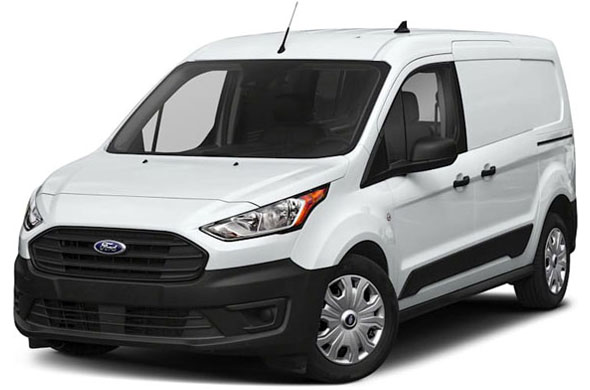The practical storage space of the Transit cabinet gives the real feel of a mobile office
Ford is simply unmatched when it comes to practical pickup trucks. What would one count in determining this? Practicality, interior design, or road-performance? But, I fear, Ford is only driving forward in all of these areas. Ford pretty much knows what step to take in the right direction, and the Transit is one such example.
Ford Transit is a light commercial vehicle manufactured by Ford Motor Company since 1965. The Transit has been produced in four different generations including the Taunus Transit (1965-1986), the second generation (1986-2003), the third generation (2000-2014) and the fourth generation (2013). To the present).
Ford states that the Transit looks more like a car than any large Ford before it, and it is absolutely true. The dashboard design is undeniably known to any driver of Ford’s passenger car range: the steering wheel, instrumentation, audio controls, and lots of other electrical switches are raised directly from its vehicle range and believe me it’s not a mill operating car, for sure.
Why does Ford say Transit is closer to the car?
Transit’s biggest claim for being like a car is to improve it. The engine makes itself audible only at the upper end of its capacity and the cabin is free from wind and road noise. The ride is surprisingly smooth, perhaps if you load the Transit 500 kg in the rear, and the steering, while not providing much feedback, is, at least, reasonably consistent and accurate.
Moreover, the thing which makes it even loveable is the availability of used Ford Transit engines all across the country at reasonable rates. Now you don’t need to wander around garages in search of replacement engines for your van.
The engine range in a Ford Transit is supernatural
The chassis cab and two tone pickups use the same 2.2 litre four cylinder turbocharged diesel engine, with three power outputs, with a six speed manual gearbox. The Transit Custom can be obtained with a low capacity 2.0 litre oil burner in three variants. The custom appears in various lengths, sizes, and configurations, but this more standout appeal is the headline in every look, for sure.
Not only does Ford put salt on the plate, but it also makes everyone believe by giving it the highest quality and practicality, which means there’s no question Ford Transit engines really do. You only need to check the Econetic 123 bhp version if you are opting for the more economical option, which gives CO emissions as low as 177 g / km with a promise of 44 mpg. In fact, these driver Econetic models are expected to book more than £ 2,000 in fuel costs over four years / 80,000 miles over non-power-powered models.
There are more energetic enemies here, the Fiat Ducato has a maximum output of 177 hp, the Mercedes Sprinter holds up to 190 hp and the VW Crafter delivers up to 163 hp – but the 140 hp or 155 hp version of the Transit delivers decent performance. And they still provide reasonably low fuel consumption, to satisfy fleet managers.
Ford Transit can live a hard life
Transit buyers have three options to choose from, i.e. front-wheel-drive, rear-wheel-drive and all-wheel-drive, depending on their use. The front-wheel drive versions usually have a lower loading floor, which will attract those users who will often cycle up and down into the loading area, or load their truck manually.
Heated windshields are included as standard, as are electric windows, tinted glass, and a radio / CD player with MP3 input, plus Ford recently added hands-free Bluetooth connectivity and voice control to help users manage their business on the go. The impending new Transit will take this a step further with Ford SYNC intelligent system for fully integrated hands-free and voice commands.
The Ford Transit made carrying everything easier
The practical storage space of the Transit cabinet gives the real feel of a mobile office that will be versatile for many users, consisting of large door pockets and 2 litre bottle holders, the storage compartment above the dashboard has a lid that folds into a small table, complete with cup holders.
Remarkably, the Transit has proven itself a lion in van reliability surveys, beating competitors such as Volkswagen and Mercedes, so buyers can choose this truck with the belief that it will not let them down. For your convenience, supply and installation of a reconditioned Ford Transit engine are available from certified engine repair shops.
The essence of Ford Transit
The Transit cabin drew most of the design from Ford’s passenger cars, with plenty of friends’ electrical switches toppled. And for durability, Ford has increased the durability of plastics, and the exterior cornering becomes an extremely rigid environment that feels like it’s built for last.
The 4-inch centre display that manages the infotainment functions is compact by modern standards, and the button grouping underneath on the dashboard requires some perfection before simple tasks can become intuitive. The software is a Ford SYNC and Bluetooth are provided as standard, and the generous equipment list is a testament to the extent to which pickups have reached in terms of ease of use. Operators can also select Ford SYNC 2 Navigation from the options menu, and this provides a larger 6.5-inch touchscreen interface that is much easier to use. Storage is impressive, with plenty of options for storing small to medium-sized items, but the Transit may be found missing in areas for storing larger items. It should be placed in the concealed box under the passenger seat.




